Are you looking to make frothed milk at home for your coffee? Well before you start frothing away, let me tell you, some milks produce better foam than others. In this post I test out 4 types of milk and draw upon my 10 years as a barista to tell you which is the best milk to froth and produces the best frothed milk for latte art.
Spoiler alert: it's dairy milk.
But keep reading as I also test out how well soy milk, oat milk, and almond milk produce steamed milk, rank them, and give handy tips on how to steam them to get the best results!
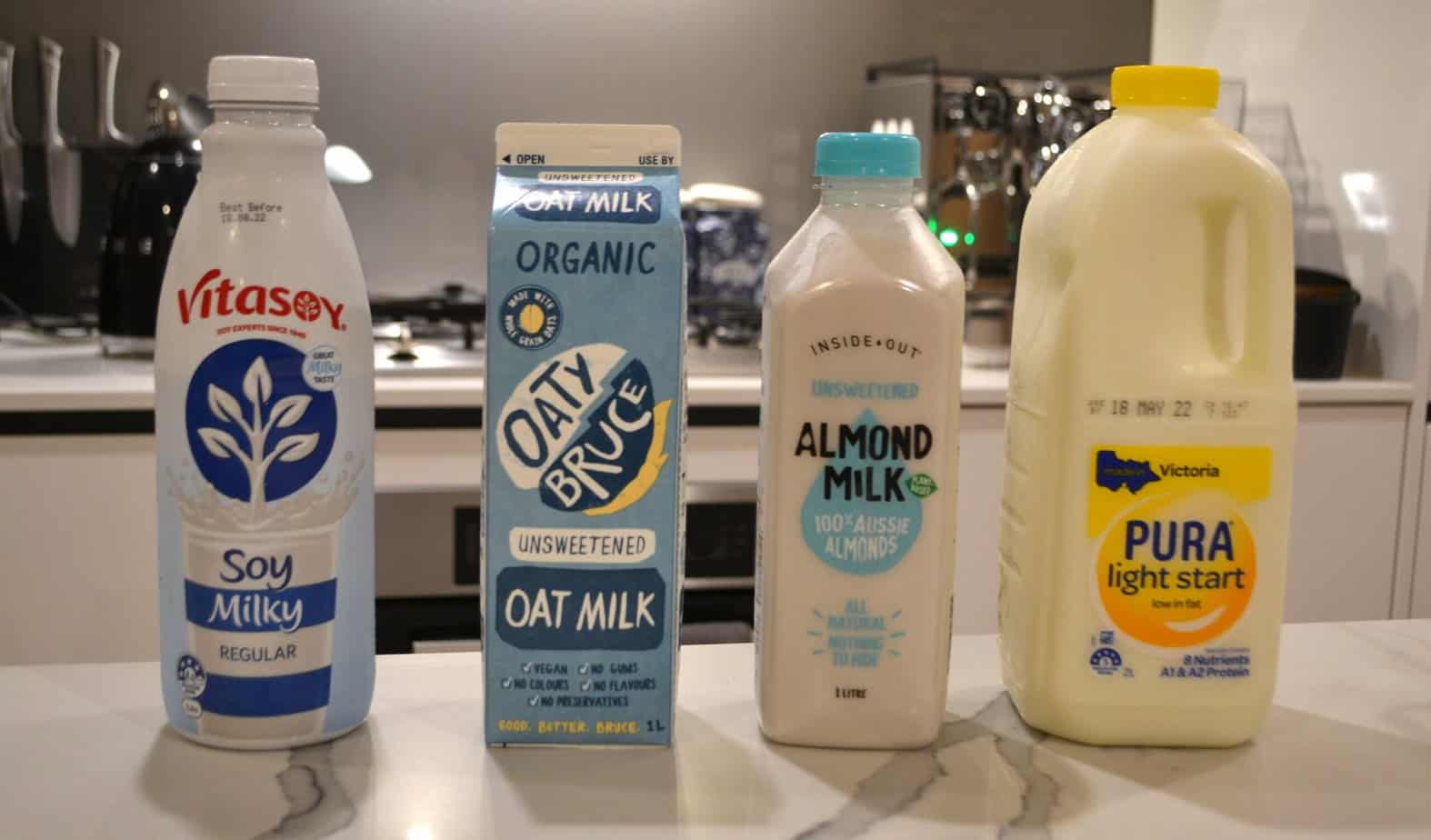
I've tested all milk types to determine what milk froths best.
How is frothed milk made?
Before we go into more detail on how the 4 types of milk we tested preform, we need to first discuss how frothed milk is actually made, as this explains why some milks are better than others when it comes to making the micro-foam needed for latte art.
When steaming milk to make coffee, we use a steam wand to slowly introduce hot steam into the milk until the proteins and fats in the milk to expand to create very small milk bubbles, also known as micro foam. It is this micro foam that creates the silky froth in coffees like lattes and mochas.
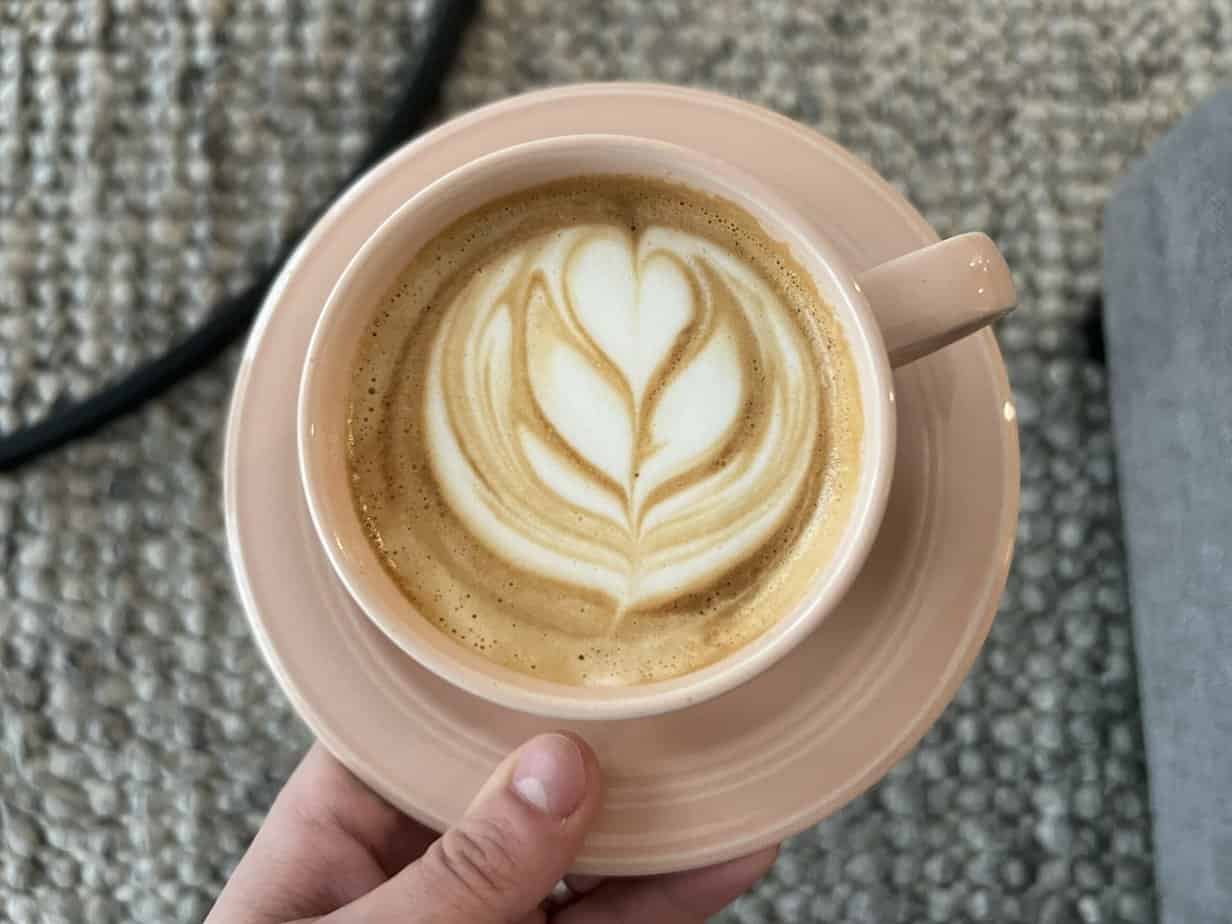
Well frothed milk produces good latte art like tulip I made.
It is the different levels of fat, protein, and carbohydrates in different milk that impacts that milk's ability to create nice and textured micro-foam to produce silky foam for latte art.
Milks with more protein content typically make better frothed milk in my experience. Below is a quick table showing the protein percent of the milk tested in this blog post.
Table 1: Protein content in different milks
Milk Type | Protein Percent |
|---|---|
Dairy skim milk | 3.4% |
Dairy whole milk | 3.3% |
Soy milk | 2.7% |
Oat milk | 0.4% |
Almond milk | 0.4% |
So with the above knowledge we can now answer the question of what milk froths the best...
What is the best milk to froth?
The best milk to froth is dairy milk. Both whole milk and skim milk produce great results for coffee and making latte art.
Whole milk produces thicker and heavier frothed milk, so it is more forgiving for beginners. Skim milk on the other hand requires a little bit more air to be introduced since it's watery (but similar protein levels), so produces very similar results once you know how to froth. In fact, on this site I make all my latte art with skim milk.
Milk frothing for latte art rankings
I'm now going to rank my preference on what milk is easiest to froth to make latte art. I'm also going to be giving tips on how to improve the quality on frothing each milk type. But if you need tips on the basic on milk steaming make sure to check out our milk steaming guide.
Also if you are not a fan of dairy, don't worry, there are plenty of alternative plant-based milks for frothing. The below list ranks them from easiest to hardest to froth.
Best milk for frothing:
- Dairy milk (whole)
- Dairy milk (skim)
- Soy milk
- Oat milk
- Almond milk
1. Dairy milk (whole)
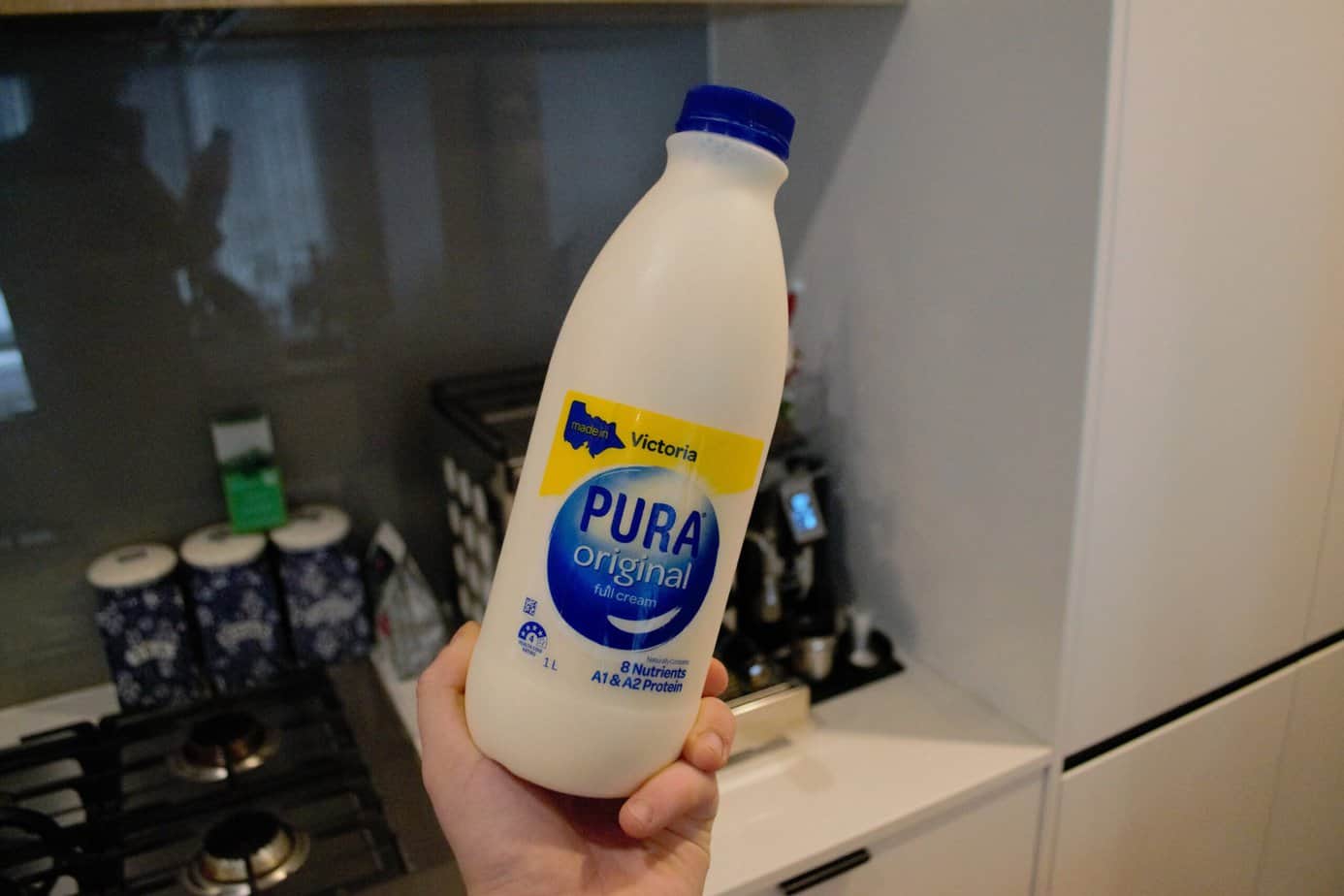
Full cream / whole milk is best for beginners.
When you first start frothing milk the easiest milk to start with is normal full cream milk or whole milk. This is because it has a good mix of protein and fat making it very easy to produce dense and creamy milk foam.
Whole milk also has a high temperature threshold. Meaning you can heat it up to up to 65 degrees (150 fahrenheit), giving you more time to make bubbles and mix the milk to create foam.
The end result is a sweet and creamy milk that goes perfectly with espresso to make many versions of coffee. There is a reason why full cream milk is the default option at most cafes, it's the easiest to froth and tasty.
2. Dairy milk (skim)
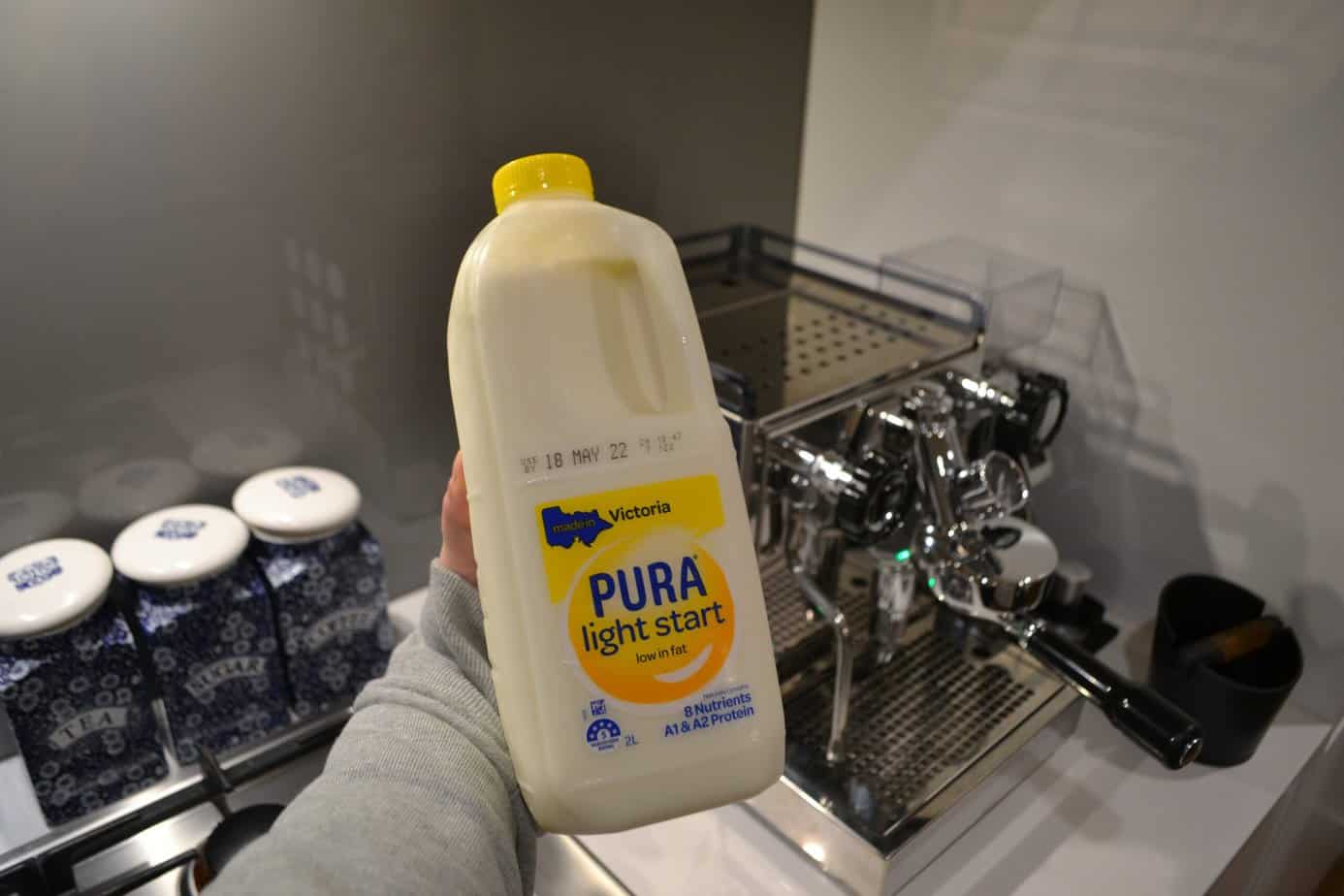
Skim milk is great for frothing milk.
Skim milk is my milk of choice when making coffee at home. This is because after you know how to make good milk with your latte maker, it produces results just as good as whole milk. It is also the healthier option for your waist.
This is because it has similar levels of protein to whole milk, but still enough fat to froth it up. What you will find is you will need to froth skinny milk a little bit longer and then spin it. Luckily, it also has a very high heat threshold of 65 degrees (150 fahrenheit), so you have plenty of time.
In terms of taste, since there is less fat it tastes less sweet and a bit waterier, however I prefer this as it allows the flavor of the espresso to cut through better. Skim milk is also my milk of choice, and is the type of milk I use on this website to make latte art.
3. Soy milk
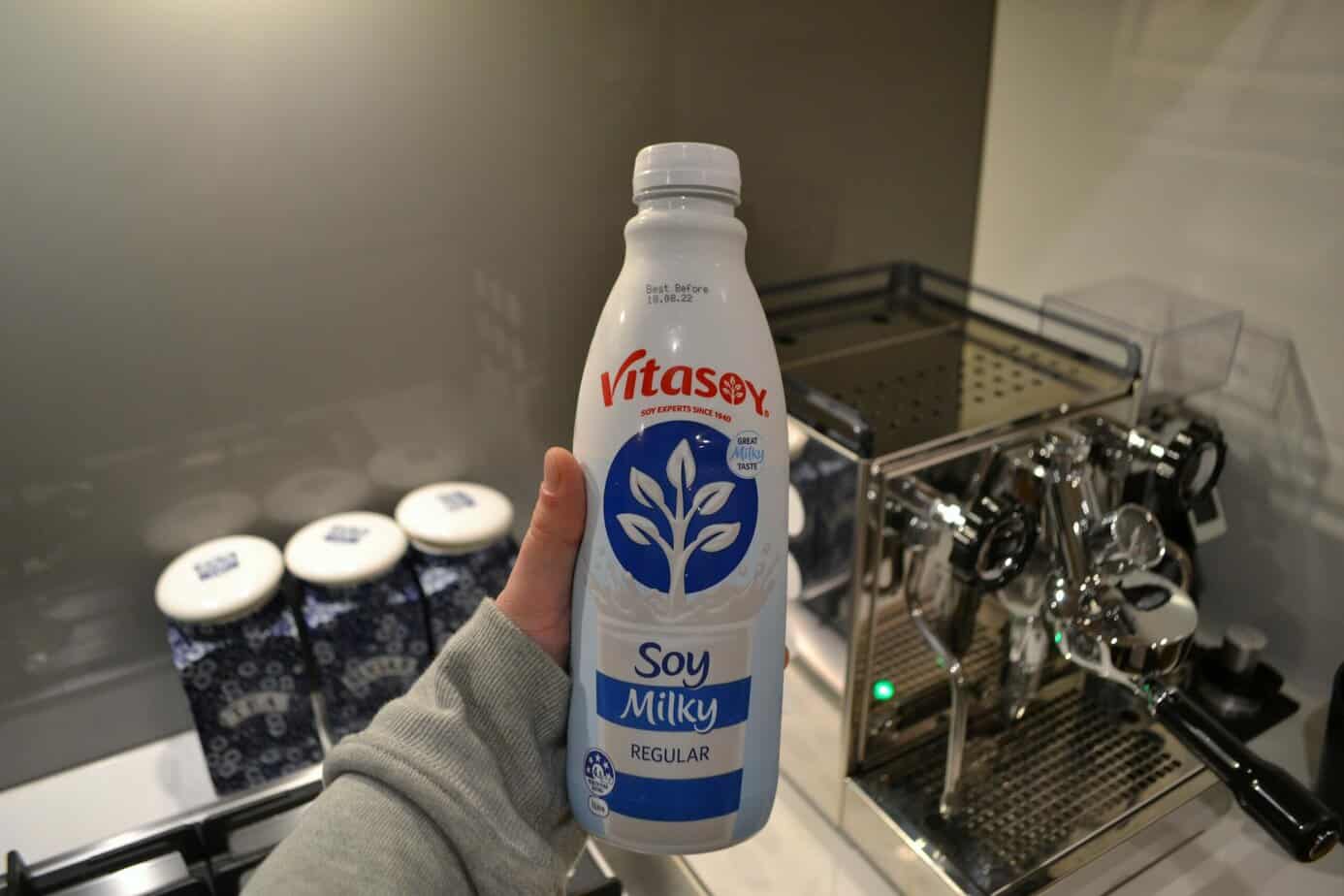
Soy milk requires a lower temperature to get good froth.
Soy milk is my favorite alternative milk to froth Soy milk is another popular option when it comes to steaming milk and is very common to be found in cafes.
When it comes to steaming soy milk trick is to steam it a bit cooler to a maximum of 55 degrees (131 fahrenheit). This is because soy milk has a lower heat threshold and if you steam it too hot it will curdle and lose any ability to make latte art.
Also, I recommend only using soy milk with earthlier blend coffee beans, as fruity coffee blends tend not to blend well with it. In terms of taste, soy milk has a distinct taste. Most people either love it or hate it.
In terms of latte art, if soy milk is frothed well, you will be able to make basic designs like fern rosettas and coffee hearts.
In terms of brand of milk, I recommend, looking for a barista series plant based milk like Pacific Natural as they are made to be easier to froth
4. Oat milk
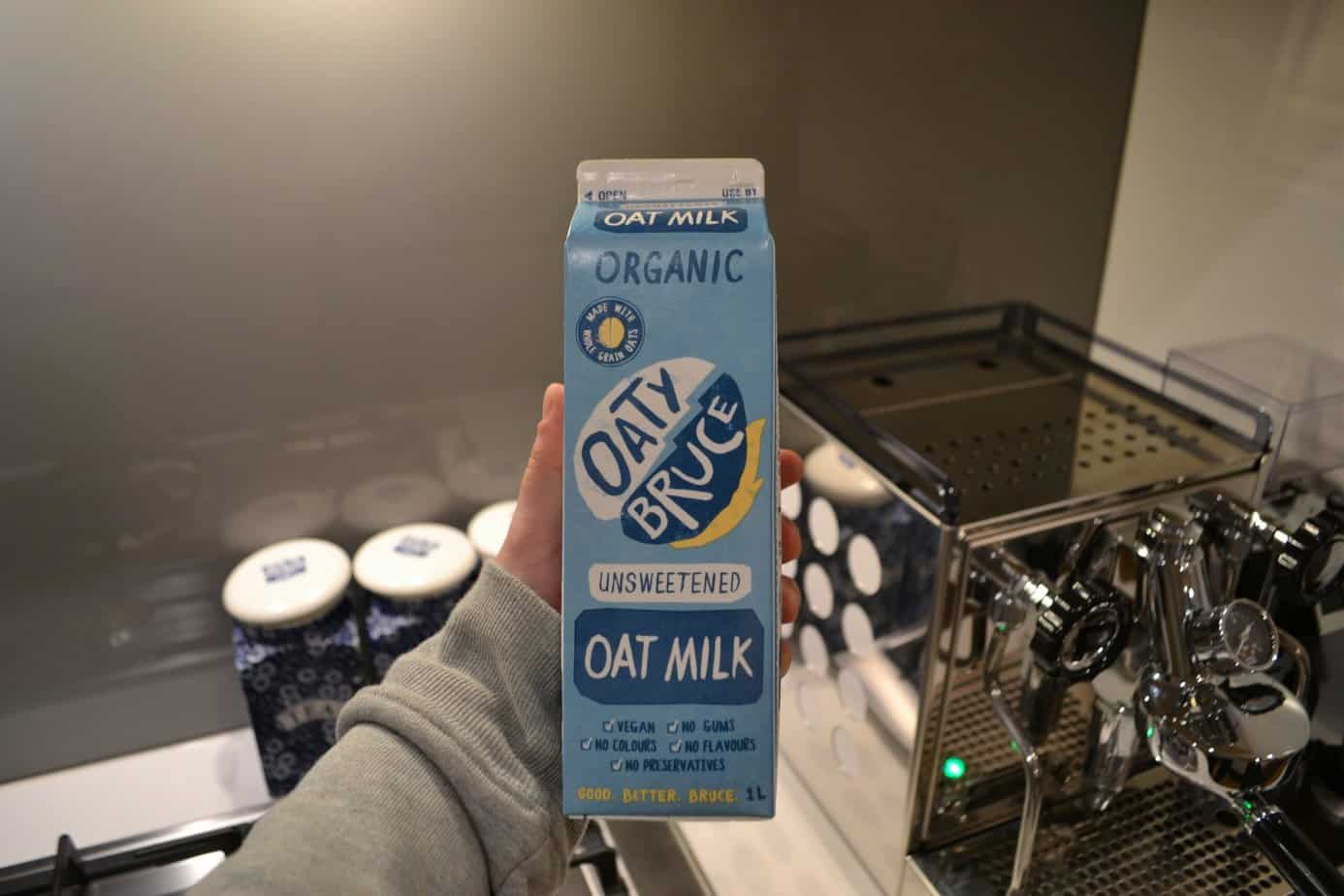
Oat milk is my favorite alternative milk to froth for latte art.
Steaming oat milk is another popular option when it comes to frothed milk. It is a great vegan friendly option for the person who likes milk-based coffee. It has a sweet taste compared to dairy milk, so it will affect the ultimate flavor profile of you drink.
Oat milk is good to froth as has a high fat content for a plant-based milk. If you are well versed in latte art, you will be able to make great textured milk to be able to even pour more difficult design patters. However, it is harder to do.
In terms of steaming temperature, you want to steam oat milk a little cooler than normal milk, 60 degrees (140 fahrenheit) at most. As it tends to split if it goes hotter.
Also, I recommend buying "barista grade" at milk like Oatly Milk to get the easiest results. I've also written a guide on the best oat milk for coffee you can check out. These barista milks have additional plant-based thickeners and stabilisers that make it easier to produce foam. This helps oat milk as it has lower levels of protein so needs something to help it hold together.
5. Almond milk
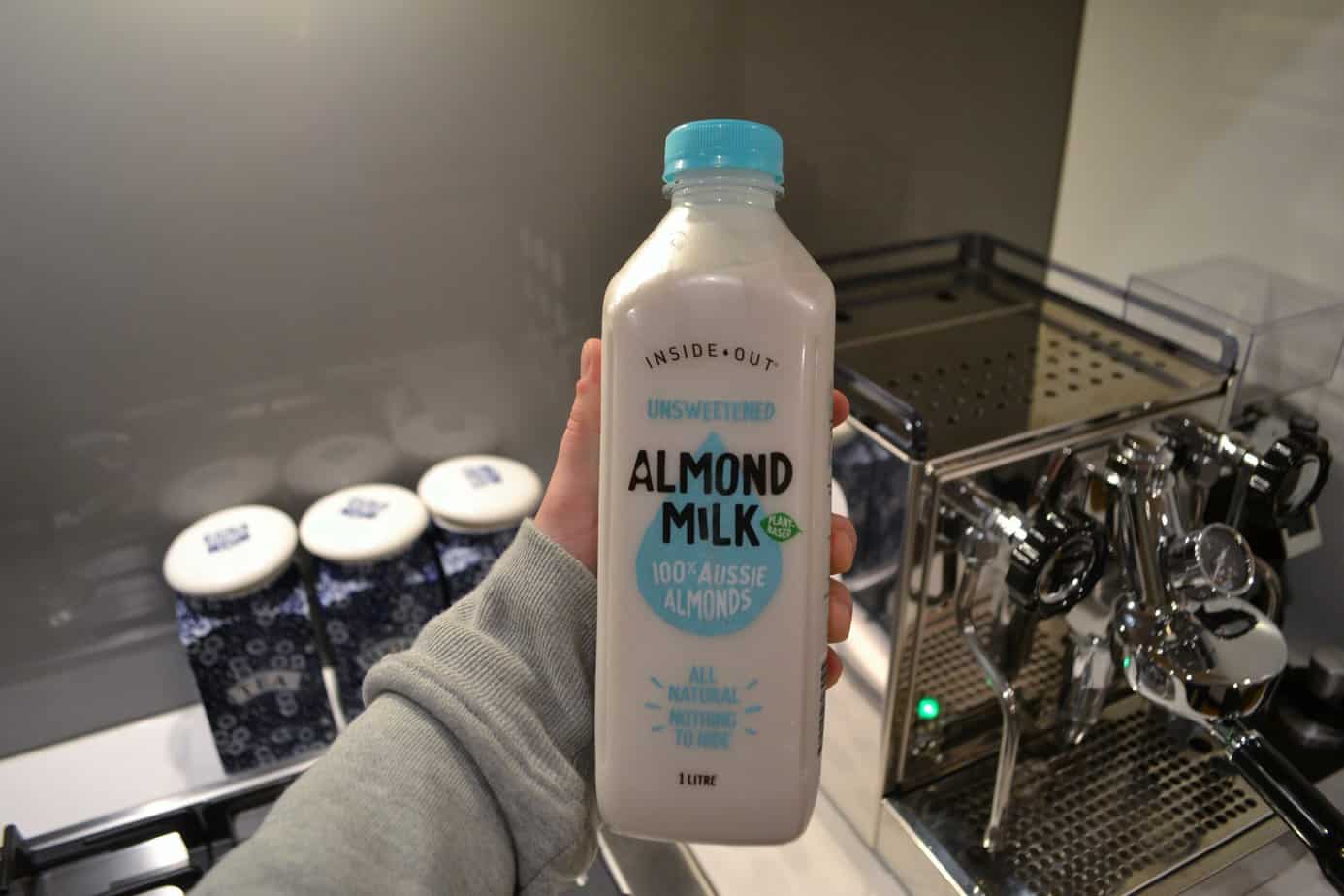
Almond milk is my least favorite plant milk to froth.
Almond milk is my least favorite milk to froth. Even I have difficulty getting good latte art out of it besides basic shapes like tulips and hearts (It does have a nice nutty taste to it however).
This is because almond milk is both lower in protein and fat so it is the missing both requirements needed to make froth easily.
I recommend getting a barista grade almond milk to make it easier to froth as it has additives to help it froth.
In terms of heat, you again want to heat almond milk a little cooler than dairy milk up to a max of 55 degrees (131 fahrenheit)
Barista tip: look for alternative milks labelled"barista" grade
When looking to froth plant based milks I recommend looking for milk that is labelled "barista grade" or barista series".
These milks are designed to froth easier and therefore make easier latter are as they have plant-based thickeners in them to make them easier to froth. This is what baristas use in local cafes so you should too if you have difficulty with normal plant-based milks.
Frequently asked questions
Below are some common questions people have aksed me about selecting the best milk for coffee foam and tips to make it.
What temperature is needed to make milk foam?
The temperature needed depends on the type of milk that you use. If you steam the milk too hot, the proteins within the milk will start to break down, and then you will get burnt and overly frothed milk that tastes bad. You can use a coffee thermometer to make sure you don't overheat your milk.
In this post we listed the best temperature for each milk type. However for ease, I have summarized it in the below table. Or if you want to get into more detail, check out my milk temperature guide.
Table 2: Best temperature for different milk types to make foam
Milk Type | Maximum Heat (Celsius) |
|---|---|
Dairy skim milk | 65 degrees (150 fahrenheit) |
Dairy whole milk | 65 degrees (150 fahrenheit) |
Soy milk | 55 degrees (131 fahrenheit) |
Oat milk | 60 degrees (140 fahrenheit) |
Almond milk | 55 degrees (131 fahrenheit) |
Does cold milk produce the best foam?
Yes, cold milk produces the best foam for coffee latte art. This is because the milk has more time to heat up, and therefore more time for you to produce micro-foam bubbles needed to make great milk. So you should always use milk cold from the fridge to when making coffee.
Does whole milk or skim milk froth better?
Both whole milk and skim milk produce very good foam as they have almost the same protein levels. However, for beginners, I recommend starting with whole milk as it is slightly easier to froth as it has more fat, meaning, the proteins have more to grab onto to create a nice dense and creamy foam.
Skim milk however produces just as good results once you know what you are doing, and is less creamy, which allows the flavor of the espresso to shine through more.
What are caseins and whey in milk?
Caseins and whey are types of protein found in milks and is what causes the milk to produce microfoam when heated up. Without protein, your milk will struggle to make foam needed for latte art.
What do you need to make frothed milk?
In order to make frothed milk you have two options.
The first one is owning an espresso / cappuccino machine that has a steam wand. This is what I use at home as is the same thing baristas use at cafes to make great foamed milk.
The second option is buying an automated milk frothing jug. These are jugs that heat up and spin the milk at the same time with a whisk to create foam. Although the type of foam they make is not suited for latte art, they are great for very frothy milk cappuccinos.
Conclusion
And there you have it! I hope this guide has helped you decide what milk type is the right for you to make nice frothed milk.
Dairy based milks are the easiest to froth due to their protein and fat contents, however if you are looking for a plant-based milk, I recommend soy, followed by oat if you don't like the taste of soy.
If you have any questions feel free to leave a comment below!

